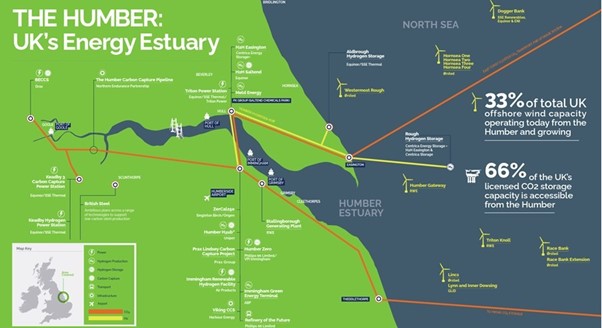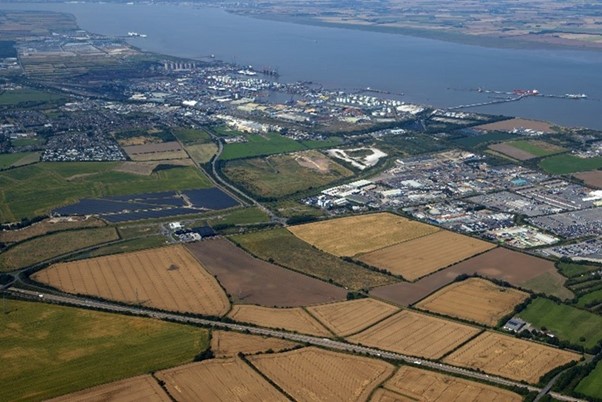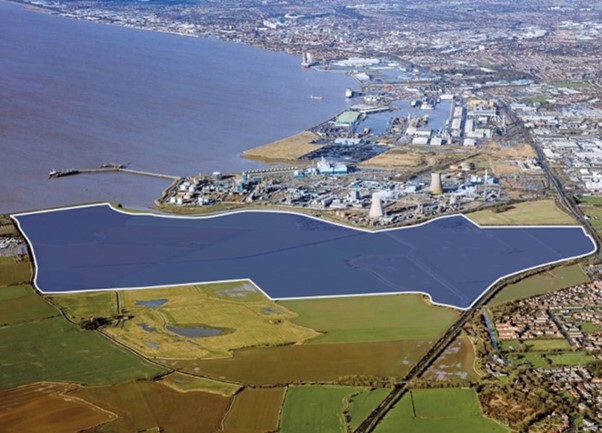Ralph Windeatt, Group Head of Business Development at ABP reflects on the first 100 days of the Humber Energy Board Limited.
When people think about the Humber region, they tend to think large-scale development and heavy industry. The region is also known for being the UK’s Energy Estuary. It produces 20% of the UK’s electricity, 25% of refined products and gas production as well as servicing 33% the UK’s offshore wind capacity. Its future potential is equally unrivalled with 2/3 of the licensed carbon storage being accessible from the Humber, the region’s ability to meet 50% of UK’s renewable power needs and 1/3 of the Government’s low carbon hydrogen production targets.
Behind these impressive numbers lies a powerful drive to maximise opportunities associated with the energy transition. To support this ambition, the Humber Energy Board (HEB) Limited was established as a focussed business group to help make the most of opportunities and address barriers to major infrastructure projects deployment. HEB Limited consists of eight founding members at the forefront of driving jobs and prosperity in the region, including Associated British Ports (ABP), Centrica, Drax, Harbour Energy, SSE, RWE, VPI, and Philips 66. We are all united by a shared ambition - The Humber Vision - which aims to bring large scale growth and prosperity to the Humber region by securing unprecedented £15 billion of private sector capital investment to transform the economy into a world leading net zero industrial economy.

HEB Limited at the House of Commons ‘Humber Vision’ launch, L-R: Corrine Barry (RWE), Richard Gwilliam, Chair (Drax), Ralph Windeatt (ABP), Jonathan Briggs (VPI), Martin Scargill, Vice Chair (Centrica) Jade Fernandez (SSE), Adam Newton (obo Graeme Davies, Harbour Energy) and Paul Fursey (Phillips 66).
“There is no future economy but a green economy”
The 2023 Net Zero Review by the Rt Hon Chris Skidmore MP, which was published by Government, highlighted the economic opportunities offered by net zero and concluded “There is no future economy but a green economy”. Rightly, since then there has been a considerable focus on ensuring the transition is affordable and truly “just” but the long-term trajectory and scale of opportunity for the UK hasn’t changed. Whilst in the short term we cannot ignore the fiscal challenges we face, we should equally not forget that Net zero is still a huge economic opportunity and we must see the initial cost as an investment in our future.
If the UK is going to become a clean energy superpower, it is essential for Government to prioritise decarbonisation on the Humber. Our industrial cluster is often noted as the largest CO2 emitting cluster in the UK, which is a function of the scale of economic activity and the 360,000 jobs it supports. It is projected that one in ten regional jobs will be safeguarded by decarbonising the Humber. The map below highlights the key projects that will enable this economic growth to commence.

To help unlock the huge economic and environmental benefits, we need UK Government to make key decisions to support the delivery of the base infrastructure. The first of these is approving a funding envelope for Viking CCS in Track 2 (the name of the Government process for sequencing the offshore carbon storage projects) and confirming the anchor projects that will capture the first carbon dioxide within the region. This will need to be closely followed by the process for future emitters in the Track 1 expansion and enabling CO2 shipping along with support for large-scale green hydrogen.
A virtuous circle of development
Taking a closer look at ports helps to illustrate how major projects can lead to a positive ripple effect for surrounding businesses and communities. To visualise this, it’s useful to think about concentric circles of development, with big pieces of infrastructure in the centre, surrounded by ever expanding circles of construction and development support services. For example, at the Port of Immingham, there’s huge growth potential, where Immingham Green Terminal can unlock the development of large-scale, green hydrogen production and the UK’s first CO2 import terminal facility that could allow the UK to commercialise the huge potential of the geological storage capacity under the North Sea. Combined, this could also create spin-off opportunities to decarbonise the aviation and maritime sectors through the production SAF and low carbon marine fuels.
Once the base infrastructure is in place, it can also support other big projects such as the Humber International Enterprise Park, a 182 ha prime development site, which falls within the Humber Freeport and is one of the largest development sites in Europe and the 200+ acre Stallingborough Interchange. Both of these sites offer potential for bespoke development opportunities and can be sub-divided to suit occupier requirements. Please connect if you’d like to discuss this in greater detail.

Stallingborough Interchange site
Humber International Enterprise Park
I will end in the same way I began – with a note of optimism. If the UK is going to decarbonise its industrial base, the Humber really is the place it has to start. Creating the low carbon infrastructure that delivers this and protects the existing jobs, will also provide the anchors to support the crowding in of further investment. This makes the Humber region the ideal place to locate businesses interested in supporting the UK energy transition. On the horizon, you can see the lean silhouette of the Humber Bridge, inviting those with vision and ambition to solve the challenge of net zero. Let’s cross it together.




